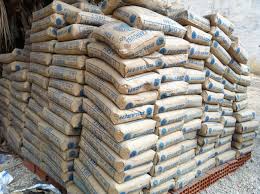Global demand for cement and concrete additives is forecast to grow at a healthy pace, reaching $24.0 billion in 2019. These increases reflect continuing growth in construction activity across the globe that will, in turn, drive global usage of cement. Increasing additive usage rates in developing countries, as well as a broader shift to higher performing specialty additives, will further support advances in additive demand. The types of additives being utilized will be impacted by environmental concerns, with the choice between blended and portland cements influencing additive demand on a national and regional basis.
China to remain largest, fast growing market
Despite a more challenging economic environment, China will remain the largest and one of the fastest growing markets for cement and concrete additives. This growth will be driven by rising urbanization and the resulting investment in public infrastructure projects such as highways and bridges, as well as by rising additive treatment rates. However, China's role as the dominant driver of global cement and concrete additive demand will diminish, as the importance of markets in developing countries such as India and Turkey continues to grow. By 2024, India is forecast to be the fourth largest market for cement and concrete additives, behind Japan. Growth in demand in the other countries in the Asia/ Pacific region and the Africa/Mideast region will also benefit from increasing urban populations. Construction activity is expected to remain strong or accelerate in developed regions, such as North America and Western Europe, driving demand for additives for concrete in buildings.
Environmental concerns to favor mineral additives
The product mix of cement used within a country, which is increasingly being dictated by environmental concerns, especially in developed countries, can also strongly influence additive demand. High or increasing use of blended cements is a particularly important factor. The use of blended cements favors the use of chemical and fiber additives that increase blended cements' competitiveness with portland cement in the high performance applications where portland cement remains the product of choice. To remain competitive with blended cements, portland cement producers are replacing progressively larger portions of clinker with supplementary cementitous materials, which results in a "greener" and lower cost product. In countries where portland cement usage is high or increasing, this trend will support growth in mineral additive demand.
Chemicals to remain largest additive segment
Chemicals will continue to be the largest cement and concrete additive segment by value, with gains driven by increasing demand for high strength concrete in industrialized nations, and continued penetration of advanced chemical additives into the construction industries in developing countries. Growth in demand for fiber additives will outpace the other major additive types, as governments invest in large infrastructure projects such as roads and bridges that utilize fibers. Mineral additive demand will also post gains, driven by increasing utilization of supplementary cementitious materials as replacement for portland cement clinker.
source: PRnewswire






